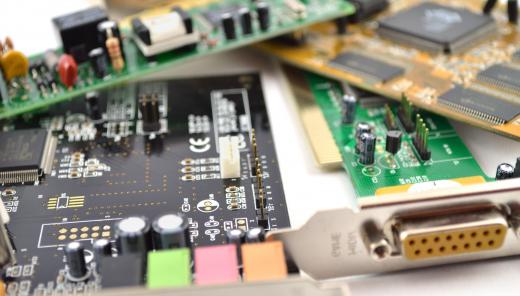The electronic manufacturing industry is a worldwide group of businesses involved in the production of computer, communications, and other electronic products. Electronics refers to any devices utilizing electrical circuits to perform a function that would otherwise be difficult or impossible. Since its origins in the late 19th century, the electronic manufacturing industry has seen significant advances in technology and widespread use around the world. Virtually all aspects of modern life have been changed or influenced by the products of this industry.
The electronic manufacturing industry began with the innovations of inventors such as Thomas Edison and Guglielmo Marconi in the 1800s. Edison pioneered the distribution of electricity to individual households, enabling the use of electronic devices such as lighting, household appliances, and communications equipment. Marconi’s creation of wireless radio paved the way for later inventions like television, satellite communication, and wireless Internet. The conveniences and luxuries provided by electrical devices sparked a worldwide demand that launched the electronics industry and continues to this day.

In the second half of the 20th century, innovations in computer technology made the personal home computer a reality. These computers had multiple uses, and each new generation was cheaper to purchase and easier to operate. By the 1990s, the Internet had connected millions of these computers into a worldwide network of information, communication, and entertainment. Each of these advances was accompanied by new devices and technologies provided by the electronic manufacturing industry. By the 21st century, electronic products had transformed the ways that people live, work, and communicate.

The electronic manufacturing industry is marked by regular advances in technology. Much of this is driven by computer processing, which generally follows a concept known as Moore’s law. According to Moore’s law, readily available information processing power tends to double every two years, meaning computers and the devices that use them can become smaller and less expensive. The electronics industry tends to place its manufacturing plants in countries with low labor wages, further increasing the affordability of the final products. The Consumer Electronics Association estimates that, in 2010, products of the electronic manufacturing industry accounted for sales of more than $180 billion US Dollars (USD) in the United States alone.

Although the electronics industry does not create as many pollutants as some other industries, it does have its environmental drawbacks. Some computer components include toxic materials. Many electronic devices are designed to be used for a short time and then discarded and replaced with a newer generation. Also, many electronic devices draw power from electrical outlets even when switched off, increasing energy usage and the consequent emission of pollutants around the world.
